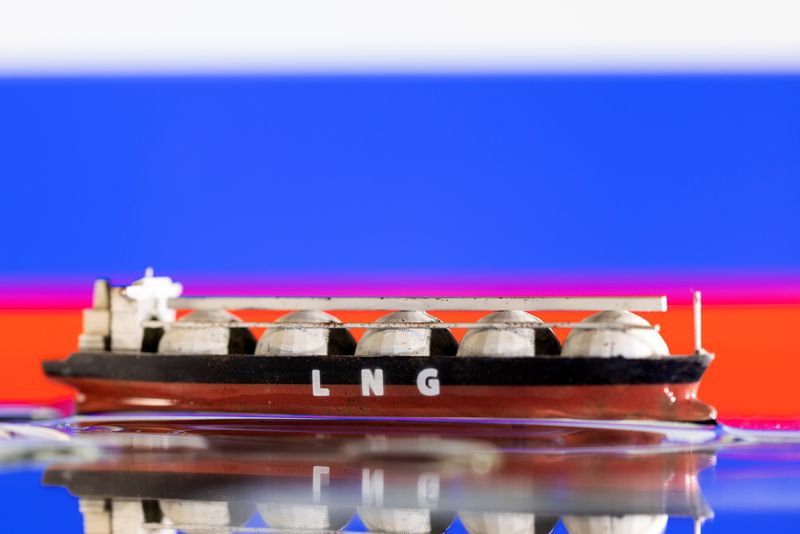Will Japan buy Russian LNG without insurance
2022.12.29 00:54

Will Japan buy Russian LNG without insurance
Budrigannews.com – After Western reinsurers announced that they would cease marine war insurance for ships traveling in Russian waters beginning on January 1, Japan, the world’s largest importer of liquefied natural gas (LNG), is facing its latest obstacle in securing essential gas supplies from Russia.
Japan has reduced its reliance on Russian oil and coal since joining other G7 nations in imposing severe sanctions against Moscow for its invasion of Ukraine. However, it continues to purchase Russian LNG despite rising prices on a constrained global market as Europe increases imports.
Since reinsurers were withdrawing coverage, Japan’s Tokio Marine & Nichido Fire Insurance, Sompo Japan Insurance, and Mitsui Sumitomo Insurance informed shipowners last week that they would no longer provide insurance coverage for ship damage caused by war in Russian waters starting on January 1. According to industry sources, shippers such as Mitsui OSK Lines and Nippon Yusen may be forced to halt operations in Russian waters without the war insurance, including the loading of LNG from the Sakhalin-2 complex in Russia’s Far East. Sakhalin-2, which is owned by Gazprom and accounts for 9% of Japan’s LNG imports, (MCX:) and companies that trade in Japan.
Japan’s power and gas utilities, such as JERA and Tokyo Gas Co. Ltd., may be scrambling to find alternatives in the event of a supply disruption caused by Sakhalin-2.
Since Russia invaded Ukraine in February, the nation has faced numerous difficulties in securing gas supplies. In order to continue importing Russian LNG, it has had to convince its G7 partners to give it some leeway. Additionally, Japanese trading houses had to agree to remain shareholders of the new Russian operator after the Russian government decided in June to take control of Sakhalin-2.
The three Japanese insurers are negotiating to keep the war coverage with various reinsurers in order to avoid supply disruptions.
In a rare joint letter, Japan’s Financial Services Agency and Agency for Natural Resources and Energy also asked insurers to take on more risks in order to keep shipping LNG from the Sakhalin-2 covered by marine war insurance.
“The main concern currently is to get marine conflict protection,” a senior authority at the business service said.
Even though many of their Western counterparts are on vacation, the insurers’ ability to obtain sufficient reinsurance remains a mystery.
Since the LNG export facility is located far from the battlefields of Russia and Ukraine, shipowners may continue operations without war coverage by taking on the risks. The voyages between Sakhalin island and Japan are short, taking just a few days, and the LNG export facility is located in a remote area.
Be that as it may, they risk losing their big haulers to seizure in Russia for some unforeseeable explanation. The cost of each LNG tanker ranges from $150 million to $220 million.
Sources in the industry said that other parties, like the government and Japanese utilities, who bought the Sakhalin fuel, might have to share the risk. However, sources in the government and among buyers said they were not yet thinking about doing so.
A utility source stated, “Insurers and shipping companies are trying to resolve the issues, and we are closely watching the situation.”
Utilizing a sovereign liability guarantee, such as the one that covered oil shipments from Iran to Japan in 2012 when Western insurers stopped covering them due to Iranian sanctions, is another option.
According to the ministry official, new legislation would be required for guarantees covering shipments from Russia because the guarantee was only authorized for Iranian oil imports.
What is Japan’s power and gas supply risk?
Even if some LNG cargoes are delayed early next month, the clock is ticking, but any immediate risk of fuel and power shortages looks small, according to another power utility source. According to that source, the reason was that stocks built up ahead of the peak winter demand season were larger than usual.
According to data from the industry ministry, LNG inventories at Japan’s major power utilities were 2.41 million tonnes on December 25, exceeding the five-year average of 1.84 million tonnes for the same time of year.
In addition, Japan has developed a brand-new mechanism that enables the industry ministry to assist in rerouting LNG supplies in the event of an emergency so that power and gas companies do not run out.
Buyers can use the upward quantity tolerance clause, which is typically found in long-term contracts, to request 5% to 10% more volumes from other suppliers in the event that supply from Sakhalin-2 is disrupted.
More Twitter available after massive outage
If the company is willing to accept the spot market’s higher price, a source at an urban gas provider said, it could also obtain alternative supply from there.
Japanese purchasers paid $15.78 per million English warm units (mmBtu) for Russian LNG in November, beneath the normal cost of imported LNG of $17.86 and a typical spot-freight cost for conveyance to Japan of $18.40, as per the Japan Association for Metals and Energy Security.
For February delivery to northeast Asia, the average cost of LNG is approximately $31 per mmBtu.
39% of Japan’s electricity is generated with LNG.








